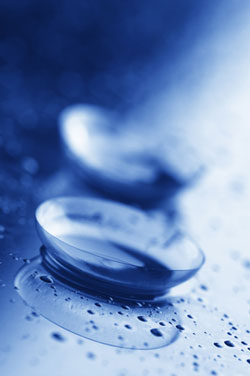Is Your Child Ready for Contacts?

Any day now, your glasses-wearing, sports-playing tween is probably going to approach you with a heartfelt request, “May I please get contact lenses? Everyone else on my team has them, and it’s hard to play with glasses.” Your first response may be to brush aside the request because in your mind, there is no way a tween is old enough or responsible enough to wear contact lenses. You may be surprised to learn then that research conducted by Ohio State University actually suggests that children between the ages of eight and eleven are just as capable of using contact lenses as older kids.
Why Your Sporty Kid Might Need Contacts Lenses
Children who are involved in sports may need contacts sooner than their non-playing peers for a number of reasons. Glasses can fog up or fall off during intense activities such as hockey, football or soccer. While you could try a pair of prescription sports goggles, these also have a tendency to fog up during extreme play and may be very uncomfortable when worn with a helmet, which is required in a number of sports. Wearing glasses or goggles in the rain can also make playing sports more difficult, and some players complain that they limit their side vision.
In other sports, such as competitive cheerleading, wearing glasses can be downright dangerous. Cheerleaders are occasionally hit in the face by elbows or legs as they try to catch teammates coming down from tosses or coming out of stunts, and a strike to a girl’s glasses could end up cutting her face. In addition, cheerleaders typically perform a lot of tumbling maneuvers, which could cause eyeglasses to fly off.
Contact Types
Although today’s contacts are generally considered safe, all types can reduce the oxygen that is supplied to your child’s cornea, which in turn can lead to eye infections. That is why it is so important that your child understands that he must take out his contacts every night. Many doctors, as well as the U.S. Food and Drug Administration, recommend getting daily wear lenses so that your child will be wearing a fresh pair of lenses each day, which can lessen the chances of dirty contacts and possible infections. However, to avoid changing contacts daily, your child may prefer Vision Direct Air Optix Aqua Night and Day: FDA-approved lenses that can be worn for 30 days without removal.
Is Your Child Ready for Contact Lenses?
According to Woman’s Day, Christine Sindt, an OD, stated that she finds it easier to work with tweens rather than teens when it comes to trying lenses for the first time. In general, Sindt said she found that tweens tend to listen better to the advice of their doctors than do their older peers.
Before you give into a child’s desire to get contact lenses, however, your child should be demonstrating signs that he or she is responsible enough to wear them. If you can answer yes to most of the questions below, then your child is probably ready for contacts.
- Is your child responsible enough to wash her hands before touching her eyes and the contacts?
- Will she remember to take them out at night?
- Is she responsible enough to place them in the right containers with a cleansing solution each night?
- Will she be able to put them in herself?




